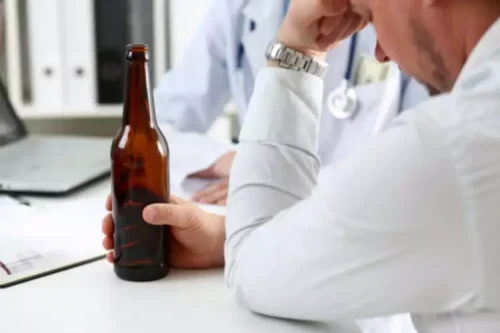
A survey of the Salvation Army’s Harbor Light Center in Washington D.C. (Wolf-Branigin and Duke 2007) found that participants who chose engagement in spiritual activities improved their chance of successfully completing their treatment program. These findings echo those of Rew and Wong (2006) who found that, among 43 studies, most (84%) showed that religiosity, i.e., the intensity of religious involvement and practice, and/or spirituality had positive effects on health attitudes https://ecosoberhouse.com/article/performance-enhancing-drugs-what-are-the-risks/ and behaviors. The results are similar to an earlier review by Moody-Smithson (2001) of more than 100 studies prepared for the Center for Substance Abuse Treatment (CSAT), which found that 90% of the studies reported that substance abuse was less common among more religious people. The inclusion of faith-based elements in otherwise secular programs has also been shown to be effective.
- Inpatient rehab programs are held at facilities that require overnight stays.
- It may also be helpful to determine whether the treatment will be adapted to meet changing needs as they arise.
- Opioid overdose visits to emergency rooms increased by 30% from July 2016 to September 2017, according to the latest Centers for Disease Control and Prevention Vital Signs report (Centers for Disease Control and Prevention, March 2018b).
- Are neither faith-based nor religious organizations, seven of their 12 steps explicitly mention God, a Higher Power, or spirituality.
- Thousands of providers nationwide offer evidence-based treatment for alcohol use disorder.
Types of Behavioral Treatments

This is 26,996 more deaths than would be generally expected; in other words, these are 26,996 people who would have possibly died but did not because they were the sober members of A.A. We could stop here; however, to be more conservative in our estimate, realizing that there are high rates of relapse in the first years of sobriety, we will focus on counting as successful only 49% of that total (13,228), which is the share of A.A. Moreover, even among those achieving 5 years or more of sobriety, 86% are likely to relapse (Dennis et al. 2007). Applying this additional condition means that 11,376 people are alive this year who otherwise would not have been without achieving sobriety. The CEA took this non-fatal total cost of $58.0 billion and divided it by the 1.9 million individuals who had a prescription opioid disorder in 2013 (the reference year of Florence et al. (2016) study), resulting in an average cost of approximately $30,000 per person. The CEA applied that average cost to the 2.4 million people with opioid disorders in 2015, resulting in a total cost of $72.3 billion for non-fatal costs (the CEA also included heroin disorders as well as prescription opioid misuse).
Here for you. Every Step of the Way.

Many people with alcohol problems and their family members find that participating in support groups is an essential part of coping with the disease, preventing or dealing with relapses, and staying sober. Your health care provider or counselor can suggest a support group. For serious alcohol use disorder, you may need a stay at a residential treatment facility. Most residential treatment programs include individual and group therapy, support groups, educational lectures, family involvement, Alcoholism Treatment Program and activity therapy. Based on clinical experience, many health care providers believe that support from friends and family members is important in overcoming alcohol problems.
Mutual Support Groups

AAC offers a range of treatment centers across the U.S. so that you can work toward recovery in a setting that best fits your needs. We are also equipped to treat co-occurring disorders throughout our network of facilities via an integrated approach to treatment. Unlike many other resources you may find online, the Navigator has no commercial sponsors. Instead, it is produced by the leading U.S. agency for scientific research on alcohol and health, the National Institute on Alcohol Abuse and Alcoholism (NIAAA). The Navigator helps adults find alcohol treatment for themselves or an adult loved one. If you are seeking help for a teen, check out these recommended adolescent treatment resources.
This study shows that religious beliefs, practices, and ministries not only provide succor and solace to those in need; they provide tangible, valuable resources that can help prevent and address substance abuse. This study also shows that the estimate by Grim and Grim (2016) of the value of religion’s individual impact ($158.8 billion), which includes everything from marital counseling to employment services to addiction recovery support, is too low. Specifically, this study’s middle estimate of $237.9 billion for substance abuse programs alone is 33% higher than their total individual social impact category.
Professional Associations of Medical and Nonmedical Addiction Specialists
- We do not accept any responsibility or liability for the accuracy, content, images, videos, licenses, completeness, legality, or reliability of the information contained in this article.
- This study shows that religious beliefs, practices, and ministries not only provide succor and solace to those in need; they provide tangible, valuable resources that can help prevent and address substance abuse.
- If you have any of these symptoms, alcohol may already be a cause for concern.
Inpatient and outpatient programs are available, and they can be the right first step for many people. We provide personalized addiction services to those struggling with drugs and alcohol and are dedicated to making treatment accessible to everyone in need. Everyone deserves the highest quality of treatment, marked by clinical excellence, and our approach to treatment allows individuals to work toward recovery in a safe, supportive and welcoming community.
